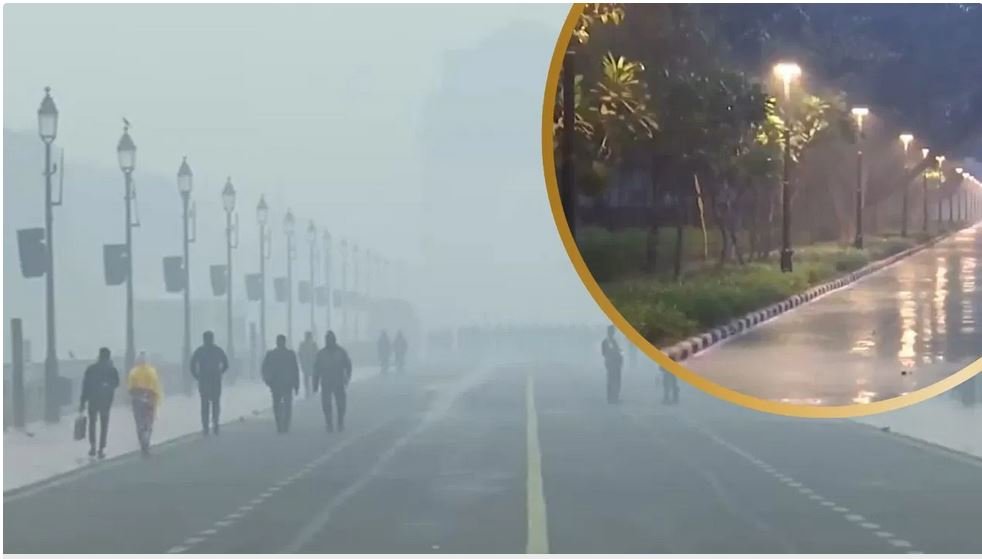Delhi’s air quality at ‘severe’ level amid cold wave

New Delhi|The air quality in the national capital is continuously deteriorating. According to the Central Pollution Control Board (CPCB), the air quality index (AQI) was recorded at 403 at 7:30 am on Monday which falls in the ‘severe’ category. According to the India Meteorological Department (IMD), a thin layer of fog covered the city, reducing visibility. At 5:30 am, the minimum temperature was recorded at 9.2 °C. Along with this, there is a possibility of cloudy sky with light rain during the day, which is expected to provide some relief from pollution.
AQI levels reached dangerous levels in several areas of Delhi, including Wazirpur (464), Ashok Vihar (460), Mundka (446), Burari Crossing (445) and Anand Vihar (443). Remarkably, air quality in Dwarka-Sector 8 (393) and Najafgarh (372) remained slightly below the ‘severe’ threshold.
AQI was recorded between 300 and 400 in many areas of Delhi. Dr Karni Singh recorded 399 at Shooting Range, 389 at Dwarka Sector-8, 351 at IGI Airport, 400 at Jawaharlal Nehru Stadium, 376 at Lodhi Road, 400 at Mandir Marg, 373 at Shadipur, 361 at Sri Aurobindo Marg, 372 at Najafgarh.
PM 2.5 (particulate matter), a major pollutant, remained dangerously high on Sunday, with 37 out of 39 monitoring stations recording ‘severe plus’ air quality.
The fourth phase of the Graded Response Action Plan has been implemented in the National Capital Region (NCR) from December 16 after the pollution situation worsened. These steps are aimed at curbing pollution, but their immediate impact is limited. The Supreme Court recently directed Uttar Pradesh and Haryana to ban firecrackers like Delhi and insisted on strict implementation of GRAP-4 and Solid Waste Management Rules, 2016. The top court also ordered NCR states to deploy teams at Delhi entry points to monitor compliance with GRAP-4 measures.
Residents are reporting pollution-related health problems, including respiratory problems and eye irritation. The combination of dense fog and poisonous air has made life challenging for the people of Delhi, with many demanding stronger and more effective measures to deal with the crisis.









